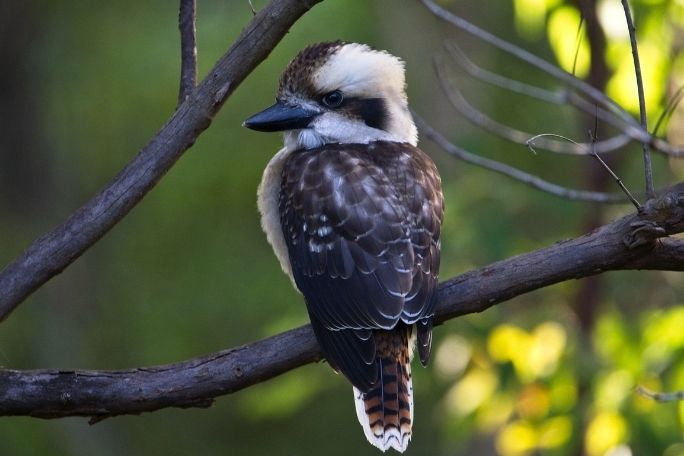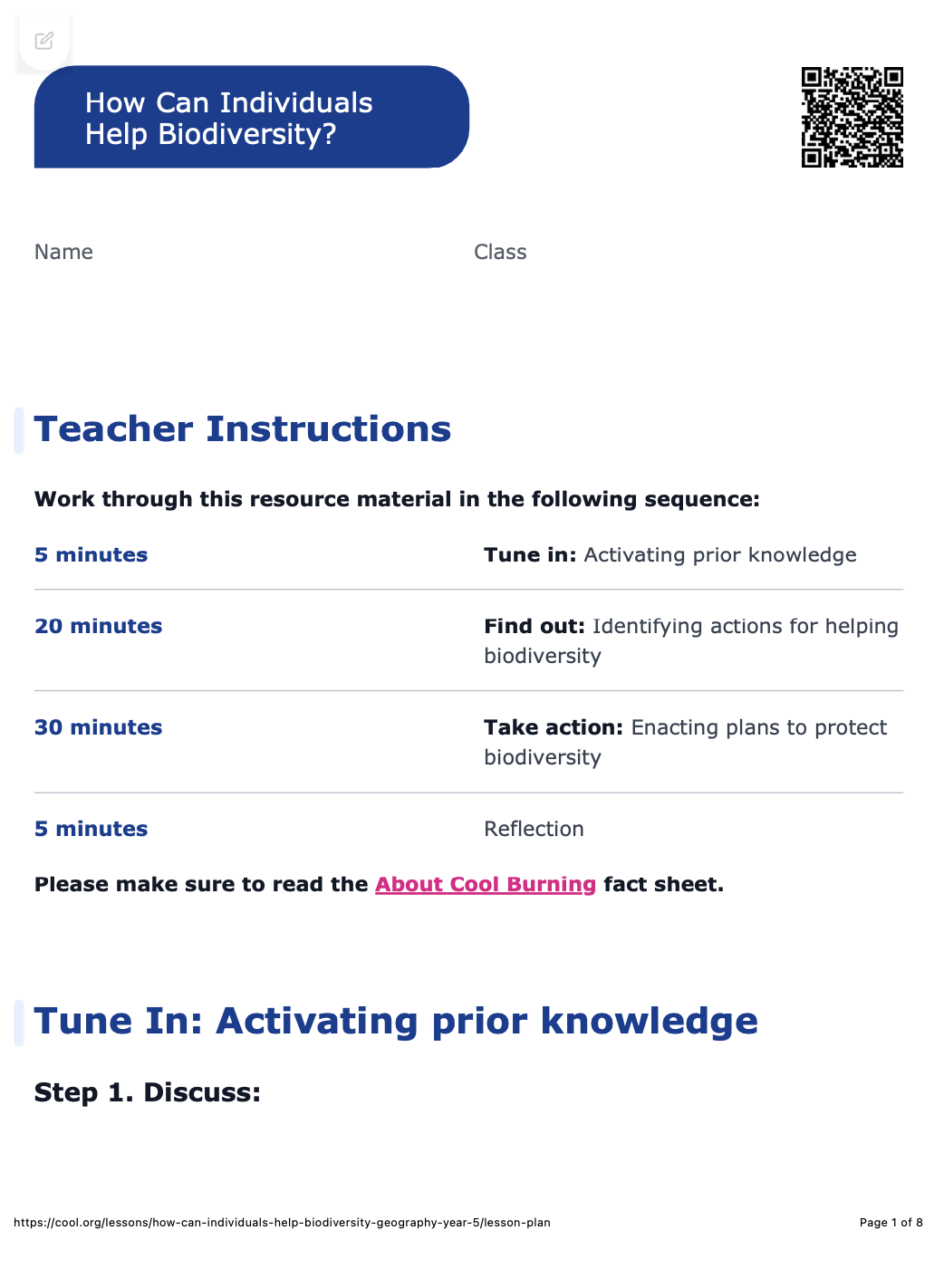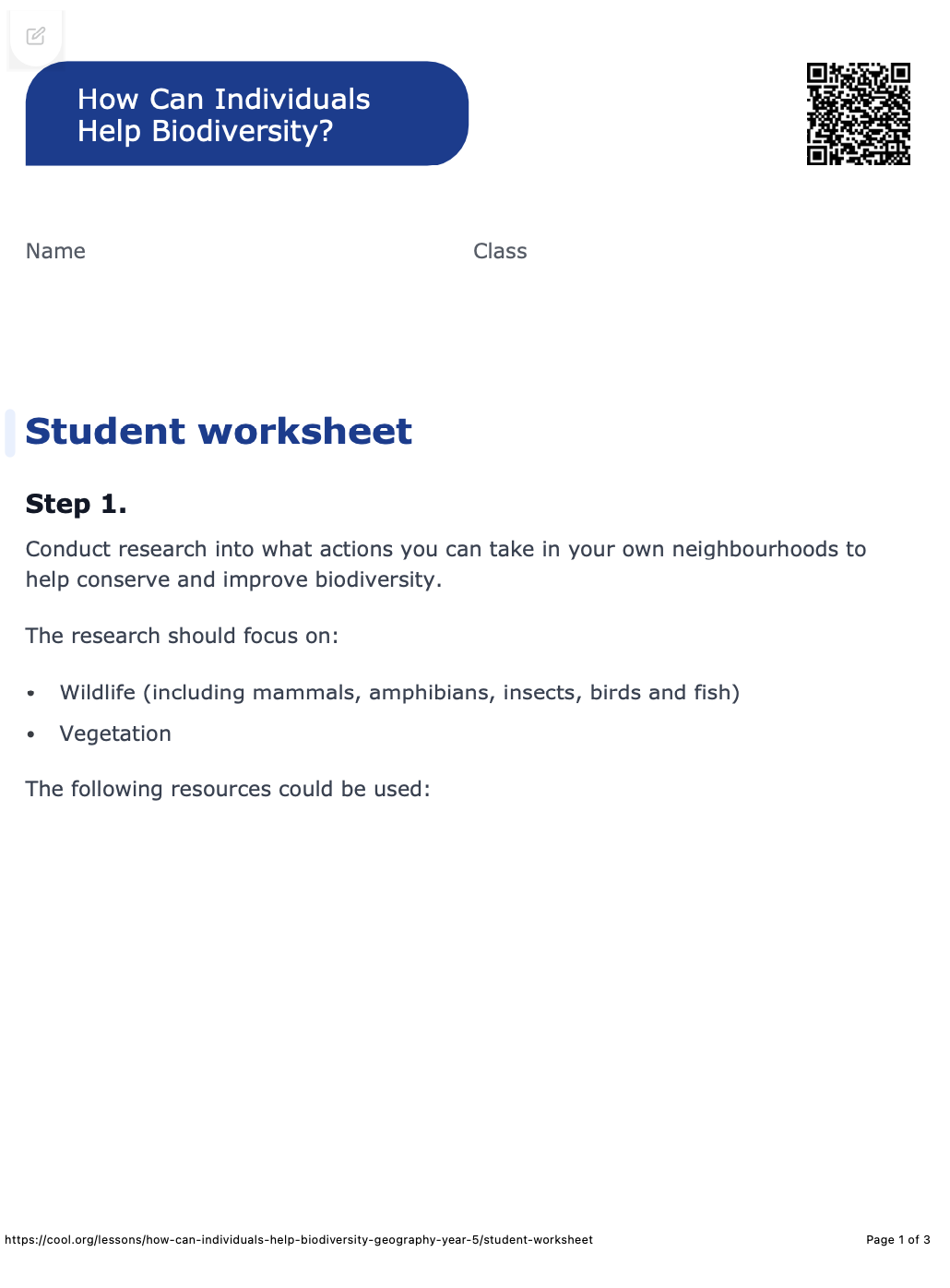Lesson summary
Students explore individual actions to help protect and conserve biodiversity in their local landscapes.
Learning intentions:
Students will...
- understand some of the actions people can take to manage Australian environments.
Success criteria:
Students can...
- conduct research
- create S.M.A.R.T goals
- plan and enact a social enterprise aimed at improving the biodiversity of a local.
Partner acknowledgement
Cool.org would like to acknowledge the support of the North Australian Indigenous Land and Sea Management Alliance Ltd (NAILSMA) in creating these resources.
Lesson guides and printables
Curriculum links
Select your curriculum from the options below.
Lesson details
Curriculum mapping
Australian Curriculum (v9.0) content descriptions:
Geography:
Students learn to:
- the management of Australian environments, including managing severe weather events such as bushfires, floods, droughts or cyclones, and their consequences (AC9HS5K05)
Cross Curriculum Priority: Sustainability, Aboriginal and Torres Strait Islander Histories and Cultures.
Relevant parts of Year 5 achievement standards:
By the end of Year 5, students explain the influence of people on the characteristics of places and in the management of spaces.
Resources required
- Device capable of presenting a website to the class
- Individual devices capable of accessing the internet
- Materials for communication piece, such as poster-making materials or desktop publishing programs
- Student Worksheet - one copy per student
Skills
This lesson is designed to build students’ competencies in the following skills:
- communication
- critical thinking
- problem solving
- collaboration
Additional info
Level of teacher scaffolding: Medium - Explain new concepts explicitly, support students in independent work.
Special thanks to:
Fish River Station, John Daly, Dr Jeremy Russell-Smith, Peter Jacklyn, Peter McConchie, Dr Tommy George, David Claudie, Dale Musgrave, Carolyn George and Victor Steffensen.
This is an original Cool+ lesson.



Welcome back!
Don't have an account yet?
Log in with:
Create your free Cool.org account.
Many of our resources are free, with an option to upgrade to Cool+ for premium content.
Already have an account?
Sign up with:
By signing up you accept Cool.org's Terms and Conditions(Opens in new tab) and Privacy Policy(Opens in new tab).